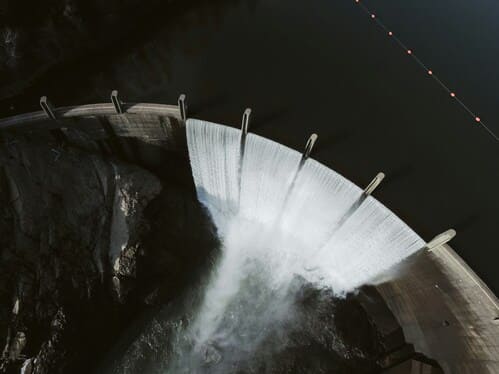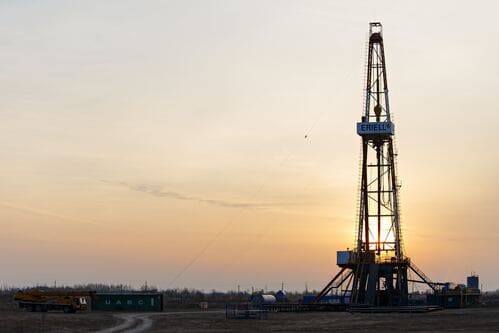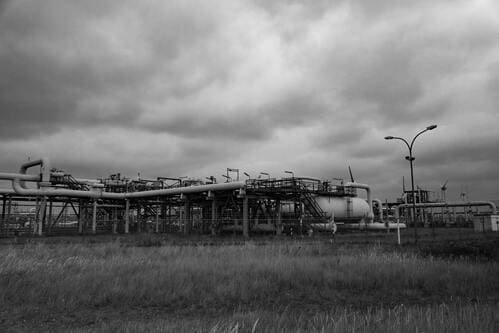Structural health monitoring systems have found a number of applications in various fields. A complex approach including several techniques is the best solution for detecting damage and structural changes.
Here are some examples of its implementation in structures where fiber optic technology is more commonly used.
Structural Health Monitoring Common Information
The most effective methods of maintenance programs include early detection of material degradation and failure. Mostly, fiber optic systems have two purposes of applications:
- Structural efficiency control during the construction;
- Continuous monitoring of structural efficiency under service loads.
Structural health monitoring systems consist of three subsystems:
- A network of fiber Bragg grating sensors;
- An FBG interrogator that records the optical reflection from each fiber optic sensor. They are placed in the necessary locations, depending on the applications and type of the structure.
- A processing unit that collects all the data from the FBG interrogator, processes it and transmits it to the user.
Distributed Sensing Systems
Distributed temperature systems are often the choice for harsh environments where traditional sensors may not be suitable. When we talk about dams, tunnels and similar structures, there are conditions that greatly affect the operation of the structures and sensors. Ground movement, earth pressure, water and groundwater have an impact on the reliability and efficiency of any monitoring system.
Specialists can monitor all deformations and temperature changes through distributed sensing. Distributed fiber optic sensors are capable of measuring various parameters from thousands of points and transmitting them to a center that provides complex data on any changes.
Distributed temperature systems are often the choice for harsh environments where traditional sensors may not be suitable. In the case of dams, tunnels and similar structures, there are conditions that have a major impact on the operation of the facility and its sensors. Ground movement, earth pressure, water and groundwater will affect the reliability and efficiency of any monitoring system.
Structural Health Monitoring of Dams
Dam safety can have a significant impact on the surrounding environment and people. That’s why structural health monitoring of the dams is an essential part of the dam safety regime. Timely detection of defects and minimizing the effects of possible damage are the main purposes of such systems. However, specialists may face some difficulties due to the height and complex structures of the dams. Comprehensive structural health monitoring can’t be fully achieved with just a few monitoring points; it requires a complete, properly designed fiber optic system. Another problem is that some areas of the dams are inaccessible or difficult to access.
There are a number of factors that can affect dam construction. These include temperature, hydrostatic pressure, chemical reactions, etc. There are also environmental factors such as air temperature, reservoir levels, and earthquakes.
All of these circumstances can be the cause of typical dam problems such as cracking, displacement, etc. The other problem is the appearance of internal erosion, which can cause the failure of the whole mechanism in the future. This problem is hard to detect. That’s why it is important to have an effective fiber optic system in place for structural health monitoring and therefore safe operation.
Accidents in dams usually occur during the first filling or in the first few years of operation. However, there are also accidents that occur later.
Structural Health Monitoring (SHM) of Tunnels
SHM is able to provide a quick assessment of the state of health of the tunnel. It is typically used for safety improvement and optimization of maintenance and operations activities. The fiber optic monitoring system provides data on any changes in indicators that could be the cause of tunnel collapse. This makes it possible to monitor the stability of the structure and take action when it’s needed.
The construction of tunnels is based on soil conditions, the functions of the tunnels themselves, and logistical issues. Underground construction is irreplaceable, especially in cities where land resources are scarce. They are not as susceptible to the effects of natural disasters as are structures on the surface of the earth.
In the hard-to-reach or problematic areas of the tunnels, distributed monitoring systems are usually recommended. This makes it easy for staff to monitor the condition of their structures and perform necessary maintenance in a timely manner. This is especially important when it comes to fires – the biggest danger in tunnels. There are special fiber optic systems for temperature control and early warning of ignition, including fiber optic heat detectors.
Today, there are automated fiber optic solutions that provide accurate monitoring from a remote location. These fiber optic devices are often designed specifically for use in critical locations. In addition, they consider the cases that may occur, such as the use of the additional FBG sensors. If the other sensor fails, they will be able to operate.
Distributed temperature sensing is a newly introduced technique capable of complex structural health monitoring systems. Temperature and pressure control is especially important for dams and tunnels with their difficult-to-access locations and other challenges that staff usually face. SHM is the solution for these situations.
Optromix is a fast-growing vendor of fiber Bragg grating (FBG) product line such as fiber Bragg grating sensors, for example, FBG strain sensors, FBG interrogators and multiplexers, Distributed Acoustic Sensing (DAS) systems, Distributed Temperature Sensing (DTS) systems. The company creates and supplies a broad variety of fiber optic solutions for monitoring worldwide. If you are interested in structural health monitoring systems and want to learn more, please contact us at info@optromix.com







 Scientists from the UK have applied fiber optic systems to observe the Greenland ice sheet and get the most accurate measurements of ice characteristics. They chose distributed temperature sensing (DTS) as the main instrument for collecting data about the ice sheets melting. The results will be used to build more precise movement models of the second-largest ice sheet in the world.
Scientists from the UK have applied fiber optic systems to observe the Greenland ice sheet and get the most accurate measurements of ice characteristics. They chose distributed temperature sensing (DTS) as the main instrument for collecting data about the ice sheets melting. The results will be used to build more precise movement models of the second-largest ice sheet in the world. According to the researchers, the distributed sensing market is predicted to reach more than $891 million by 2026. The distributed temperature sensing power cables and distributed acoustic sensing systems, as well as global environmental changes, are expected to increase the demand significantly. The modern advancements and developments connected with the light-sized fiber optic systems stimulate globally the distributed sensing market. Moreover, the growth of the distributed sensing market can also be explained by the government’s support for distributed temperature sensing technology.
According to the researchers, the distributed sensing market is predicted to reach more than $891 million by 2026. The distributed temperature sensing power cables and distributed acoustic sensing systems, as well as global environmental changes, are expected to increase the demand significantly. The modern advancements and developments connected with the light-sized fiber optic systems stimulate globally the distributed sensing market. Moreover, the growth of the distributed sensing market can also be explained by the government’s support for distributed temperature sensing technology. Passive
Passive  The technology of
The technology of